The New Physical Education and Intramural Building, North Carolina State College, Raleigh, N.C.
The modernist Carmichael Gymnasium complex on the NC State University campus is our Flashback Friday feature this week. The card is a classic example of the ‘photochrome’ type, common in postcard production since the mid-1950s.
No message this week!Â
Carmichael Gymnasium: A New Era in Physical Education at NC State University
Student enrollment at NC State swelled following the end of World War II. Within 15 years Thompson Gymnasium, which had been erected in 1925, was found to be woefully inadequate to accommodate the ever growing student body.
Thompson Gymnasium, as seen soon after its completion in 1925. The building now houses NC State’s Thompson Theatre and the NCSU Craft Center.
Therefore, in 1960 the university undertook to erect a spacious, 345,329 square-foot gymnasium complex comprising a gymnasium, natatorium, basketball courts, indoor racquetball courts, exercise rooms, classrooms and other sports-oriented amenities.
Carmichael Gym was named for Donald Carmichael, former Vice President and Financial Officer (1940-1961) for the then three-college North Carolina Consolidated University system.
During his administration, Carmichael supported funding for the completion of the gymnasium, Reynolds Coliseum, a state educational TV system, Burlington Laboratories’ nuclear reactor, and the William Neal Reynolds Professorships. One of his characteristic words was “imagineering.”
Construction work  on the Modernist style building proceeded quickly after ground was broken in 1961.
In the photo above, construction of the natatorium, gym and ball court/classroom wing were well underway. Below is an aerial view of the completed complex, which opened in 1962.
If you look closely at the aerial photo, you will see the Student Bookstore, designed by G. Milton Small 1959, and Harrelson Hall, designed by Edward Walter Waugh in 1960, in an axial alignment with the gymnasium complex. Both Small and Waugh were brought to Raleigh by Dean Henry Kamphoefner, founder of NC State’s College of Design.
Sadly, the Bookstore was demolished three years ago, and Harrelson is slated for demolition in 2016.
This dramatic photo, taken in 1962, shows the natatorium, as seen across its forecourt, which is now unfortunately occupied by a large building.
Since 1961, the Carmichael Gymnasium complex  has expanded to include an Olympic-sized swimming pool, a separate structure added adjacent to the original natatorium in 1987, and the 42,000 square-foot Carmichael Recreational Center, erected next to the gymnasium in 2007.
Our photochrome postcard this week was printed locally by The Technical Press, State College Station, Raleigh, N.C.
Photochrome (Chrome)
The term photochrome has multiple meanings in different fields. It was used as early as 1874 in the printing trades to refer to a printed image in natural color that was photomechanically derived from a photographic image; a process known as photochromy. This remains the general meaning of the word today.
In 1936 the development of new color inks, combined with the introduction of the first high quality, multi layered film, Kodachrome introduced process printing of photographs. For the first time color-separated halftone negatives could be made for CYM (blue, yellow, red)Â hues with the aid of process cameras. When printed these three plates would render an image in better natural color than ever before. Black would be added to the pallet as a fourth color (CYMK), but it was not consistently used at first.
Postcards started to be produced through process printing almost immediately, but by the late 1940s photochromes were in high competition with linen cards and have monopolized production since the mid 1950s. These modern types of tricolor postcards that evolved from their earlier versions are now what is meant when referring to a photochrome or simply chrome for short. Their quality has increased over the years with advancements in film and offset lithography.
“Flashback Friday†is a weekly feature of Goodnight, Raleigh! in which we showcase vintage postcards depicting our historic capital city. We hope you enjoy this week end treat!
Â

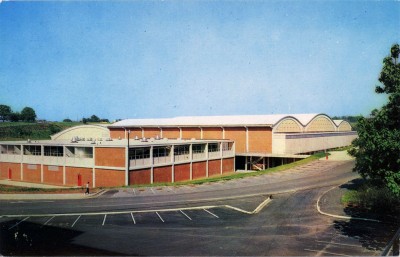
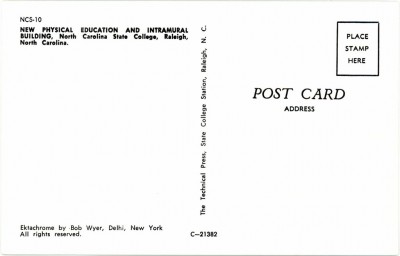
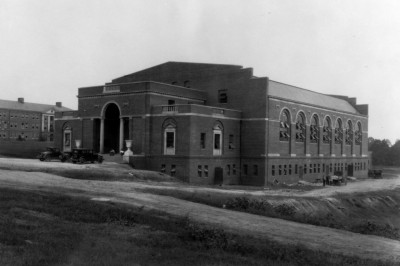
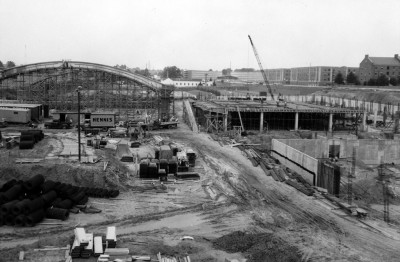

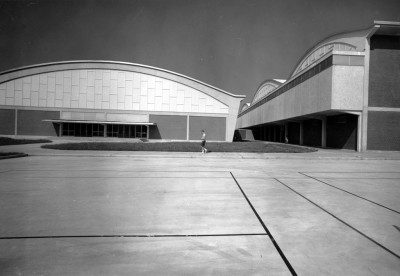
 Sign up for the Newsletter
Sign up for the Newsletter